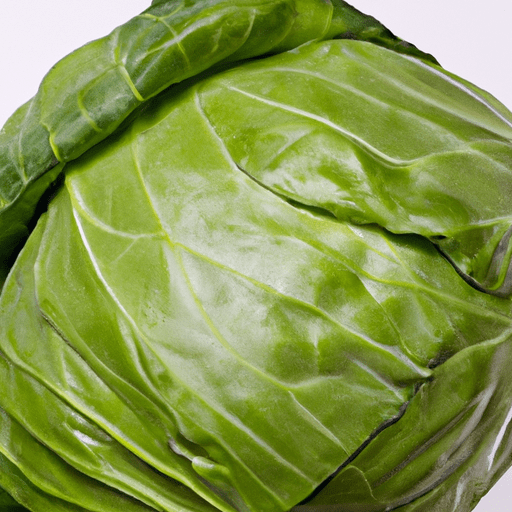Cabbage: A Versatile and Nutritious Vegetable
Cabbage is a humble yet remarkable vegetable that deserves a special place in your kitchen. With its mild taste, crunchy texture, and incredible versatility, cabbage has become a staple in cuisines across the globe. Whether you enjoy it raw, cooked, fermented, or pickled, this leafy delight offers a delightful combination of flavor and nutrition.
Taste and Texture
Cabbage features a mild, slightly peppery taste that intensifies when cooked. Its crisp and dense texture adds a satisfying crunch to any dish. When eaten raw, cabbage offers a refreshing and vibrant flavor that pairs well with various dressings and fillings. Through cooking, cabbage softens and develops a sweeter taste, making it a perfect addition to stir-fries, stews, soups, and sautés.
Culinary Applications
The culinary possibilities with cabbage are virtually endless. Shredded cabbage features prominently in coleslaws, providing a refreshing and crunchy element alongside creamy dressings. It forms the foundation of sauerkraut, a traditional fermented dish renowned for its probiotic benefits. Additionally, cabbage leaves can be used as a vessel for stuffing, where they wrap around a flavorful filling to create delectable cabbage rolls.
When it comes to cooking, the versatility of cabbage shines through. It adapts well to different cooking techniques, such as boiling, steaming, roasting, or grilling. You can incorporate cabbage into soups and stews, where it adds both texture and volume. It also plays a supporting role in stir-fries and works wonders when sautéed with garlic and a splash of soy sauce.
Nutritional Value
Cabbage is not only delicious but also incredibly nutritious. This cruciferous vegetable is low in calories and packed with important vitamins and minerals. It is an excellent source of vitamin C, providing a healthy dose of antioxidants to support immune function and overall well-being. Cabbage is also rich in dietary fiber, aiding digestion and promoting a healthy gut.
Furthermore, cabbage contains a range of beneficial compounds known for their potential health benefits. Indole-3-carbinol, a naturally occurring compound found in cabbage, has been linked to reducing the risk of certain types of cancer. Sulforaphane, another compound abundant in cabbage, has antioxidant and anti-inflammatory properties, which may help protect against chronic diseases.
History and Fun Facts
Cabbage has a fascinating history, dating back thousands of years. It is believed to have originated in the eastern Mediterranean region, and subsequently spread throughout Europe and Asia. Ancient civilizations, such as the Egyptians, Greeks, and Romans, valued cabbage for its medicinal properties and used it as a natural remedy for various ailments.
Interestingly, cabbage played a significant role in preventing scurvy during long sea voyages, due to its high vitamin C content. Captain Cook even referred to it as the “sailors’ antidote” because of its ability to prevent this debilitating disease.
In addition to its historical significance, cabbage holds cultural importance as well. It features prominently in traditional dishes from countries like Germany, Poland, Korea, and Ireland. Stuffed cabbage rolls, kimchi, sauerkraut, and colcannon are just a few examples of iconic dishes that highlight the versatility of this vegetable.
Cabbage is an unsung hero in the world of vegetables, often overlooked for flashier options. However, its mild taste, crunchy texture, and versatility make it a must-have in any kitchen. Whether you enjoy it raw, cooked, fermented, or pickled, cabbage adds depth and nutrition to a wide variety of dishes. So, why not explore the numerous culinary possibilities and embrace the resplendent cabbage in your cooking adventures?
Origin: Cabbage (Brassica oleracea) is believed to have originated in Western Europe and the Mediterranean region. It has been cultivated for thousands of years and is one of the oldest known vegetables.
Common Uses: Cabbage is a versatile vegetable with a myriad of culinary uses. It can be enjoyed raw in salads, coleslaw, or kimchi, as well as cooked in stir-fries, soups, stews, and sautés. Fermented cabbage is used in traditional dishes like sauerkraut and pickled cabbage.
Nutritional Benefits: Cabbage is low in calories and a good source of essential nutrients. It is rich in vitamin C, vitamin K, and dietary fiber. It also contains smaller amounts of vitamin A, vitamin B6, folate, calcium, iron, and potassium.
Unique Properties: One special property of cabbage is that it is a cruciferous vegetable. This family of vegetables includes broccoli, cauliflower, and Brussels sprouts. Cruciferous vegetables are known for their potential health benefits, including cancer-fighting properties due to their high content of antioxidants and phytochemicals.
Historical Significance: Cabbage has a rich historical significance. Ancient Greeks and Romans highly valued cabbage for its medicinal properties. It played a significant role in preventing scurvy during long sea voyages in the 16th and 17th centuries because of its vitamin C content. Additionally, cabbage has been a staple in traditional European cuisine for centuries, with various dishes and preparations developed over time.




Use the share button below if you liked it.
It makes me smile, when I see it.